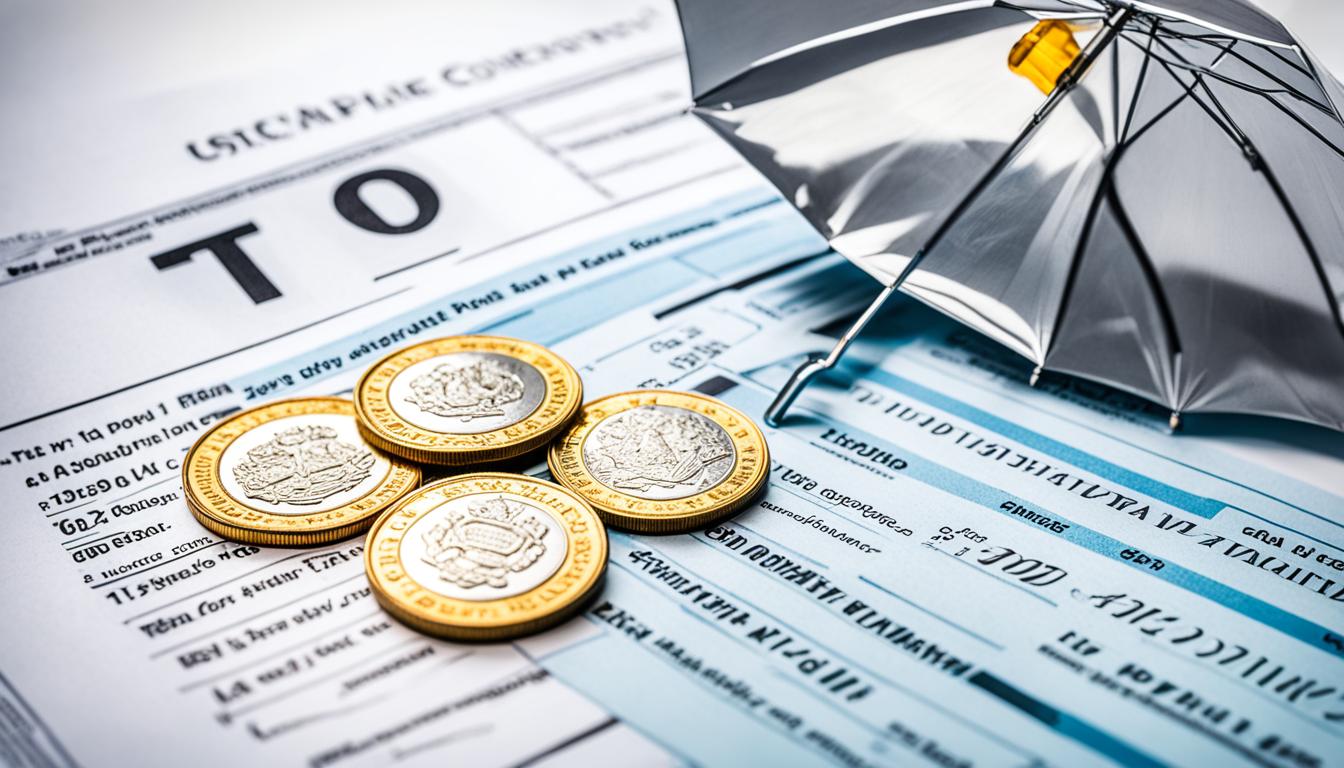Welcome to our guide on how to avoid capital gains tax in the UK. Understanding and managing your capital gains tax liability is essential for any investor or property owner. Capital gains tax is incurred when you sell or dispose of an asset that has increased in value, and it applies to a wide range of assets, including property, investments, and valuable possessions.
In this article, we’ll explore various strategies and exemptions available to individuals and businesses to minimize their capital gains tax obligations legally. Whether you’re a property investor, a business owner, or simply looking to manage your personal finances more efficiently, our tips and advice will help you navigate the complexities of capital gains tax in the UK.
How to Avoid Capital Gains Tax in UK?
Consider the Timing of Your Capital Gains
Planning the timing of your capital gains can be a simple yet effective way to maximize the benefit of the annual exempt amount (AEA) and navigate the use it or lose it rule. The AEA, which is the amount of capital gains you can make without incurring capital gains tax (CGT), follows a use it or lose it rule, meaning you cannot carry it forward to future tax years.
By strategically spreading your capital gains over different tax years, you can make the most of multiple sets of AEA and minimize your CGT liability. This can be especially valuable considering the decreasing AEA, which is scheduled to decrease to £3,000 in the 2024/25 tax year. By effectively managing the timing of your capital gains, you can take advantage of the higher tax-free allowances in the current tax year while they are still available.
Benefits of Timing Capital Gains
Timing your capital gains enables you to:
- Maximize the use of annual exempt amount (AEA) for tax-free gains
- Optimize tax efficiency by utilizing higher tax-free allowances before they decrease
Strategies for Timing Capital Gains
Here are some strategies to consider when timing your capital gains:
- Harvest losses in a high AEA year to offset gains in future years.
- Realize capital gains sooner rather than later to take advantage of higher tax-free allowances.
- Spread capital gains over multiple tax years to make the most of the AEA.
It’s essential to review your financial situation, consult with a tax professional, and consider the potential ramifications before implementing any timing strategies for capital gains. Understanding the AEA, CGT allowance, and the use it or lose it rule is crucial in managing the timing of your capital gains effectively.

Utilize Tax Efficient Wrappers
When it comes to minimizing capital gains tax (CGT) liabilities, tax efficient wrappers can be a valuable tool. These wrappers provide various CGT reliefs that can help reduce your tax obligations. The Enterprise Investment Scheme (EIS), Seed Enterprise Investment Scheme (SEIS), Social Investment Tax Relief (SITR), and ISAs are popular tax efficient wrappers that offer specific benefits for capital gains tax.
The EIS, SEIS, and SITR are designed to encourage investment in qualifying businesses and social enterprises, thereby providing incentives to investors. These schemes offer disposal relief, deferral relief, reinvestment relief, and loss relief, all of which can be highly advantageous when it comes to managing your CGT liabilities. By utilizing these tax efficient wrappers, investors can potentially reduce their CGT obligations and retain more of their investment gains.
Furthermore, ISAs provide an additional avenue for tax efficiency. With ISAs, investors can enjoy tax-free investment growth and returns. This means that any capital gains and income generated within an ISA are exempt from CGT. By taking advantage of ISAs, investors can further enhance their tax efficiency and protect their investment gains from CGT.
Considering the current financial landscape and the decreasing CGT allowances, utilizing tax efficient wrappers has become even more crucial. As the government seeks to enhance tax revenues, investors must proactively employ strategies that minimize their CGT liabilities. Tax efficient wrappers provide a valuable opportunity to achieve this goal and retain more wealth.
To help illustrate the benefits of tax efficient wrappers, the table below summarizes the key features and advantages of the Enterprise Investment Scheme (EIS), Seed Enterprise Investment Scheme (SEIS), Social Investment Tax Relief (SITR), and ISAs:

| Wrapper | CGT Reliefs | Advantages |
|---|---|---|
| Enterprise Investment Scheme (EIS) | Disposal relief, deferral relief, reinvestment relief, and loss relief | – Encourages investment in qualifying businesses\n- Provides generous tax incentives\n- Enables tax-efficient capital gains\n- Can be used to offset income tax liabilities |
| Seed Enterprise Investment Scheme (SEIS) | Disposal relief, deferral relief, reinvestment relief, and loss relief | – Focuses on early-stage, high-risk businesses\n- Offers enhanced tax benefits\n- Encourages investment in innovative startups |
| Social Investment Tax Relief (SITR) | Disposal relief, deferral relief, reinvestment relief, and loss relief | – Supports investments in social enterprises\n- Provides tax incentives for social impact\n- Offers opportunities for blended financial and social returns |
| Individual Savings Account (ISA) | Tax-free investment growth and returns | – Potentially exempt from income tax and CGT\n- Provides flexibility and accessibility to a range of investment options\n- Offers tax-free savings opportunity |
Bed and ISA, Bed and SIPP
Bed and ISA and Bed and SIPP are two strategies that can provide tax advantages for investors looking to maximize their ISA allowances and pension contributions while potentially minimizing their capital gains tax (CGT) liabilities.
Bed and ISA involves selling existing investments outside of an ISA and then repurchasing them within an ISA. By doing so, investors can move their investments into a tax-efficient wrapper, allowing for tax-free growth and no CGT liability on future gains.
Bed and SIPP follows a similar principle, but instead of an ISA, the proceeds from the sale of existing investments are used to top up a Self-Invested Personal Pension (SIPP). By contributing to a SIPP, individuals can benefit from tax relief on their pension contributions, potentially reducing their CGT liability and boosting their retirement savings.
While these strategies can be effective in terms of tax planning and maximizing tax advantages, it’s important to consult with a financial adviser to ensure compliance with the rules and regulations surrounding Bed and ISA and Bed and SIPP.
Benefits of Bed and ISA:
- Utilizes the annual ISA allowance, which was £20,000 in the 2022/23 tax year, allowing for tax-free growth and potentially reducing CGT liabilities.
- Transfers investments into a tax-efficient wrapper, offering a wider range of investment options within the ISA.
- Provides the opportunity to shelter future gains from CGT, reducing the tax burden on investment returns.
Benefits of Bed and SIPP:
- Uses the proceeds from the sale of existing investments to boost pension contributions.
- Allows individuals to benefit from tax relief on the capital used to top up their SIPP, potentially reducing their CGT liabilities.
- Provides an opportunity to enhance retirement savings by taking advantage of tax-efficient pension contributions.
It’s essential to consider the rules and limits of both ISAs and SIPPs when implementing Bed and ISA or Bed and SIPP strategies. By understanding the eligibility criteria, contribution limits, and tax implications, investors can make informed decisions to optimize their tax efficiency and retirement planning.

| Strategy | Key Features |
|---|---|
| Bed and ISA | Move investments into an ISA for tax-free growth and potential CGT relief |
| Bed and SIPP | Top up a SIPP with proceeds from the sale of existing investments to benefit from tax relief on pension contributions |
Make the Most of Your Losses
When it comes to capital gains tax (CGT), losses can be your ally. By strategically utilizing capital losses, you can offset gains and significantly reduce your taxable gains, ultimately lowering your overall CGT liability.
Firstly, any capital losses incurred within the same tax year can be offset against gains. This means that if you have suffered losses on certain assets, you can deduct those losses from the gains you have made, reducing the amount of taxable gain subject to CGT.
Furthermore, unused capital losses from previous years can be carried forward and utilized in subsequent tax years. This provides an opportunity to offset future gains with your previously incurred losses, allowing you to reduce your CGT liability over time.
Planning ahead is crucial when it comes to utilizing losses effectively. By carefully considering your investment portfolio and timing your capital gains and losses, you can maximize the benefits of offsetting losses against gains and reduce your overall CGT liability.
Example
Let’s say you made a profit of £10,000 on the sale of a property (a capital gain). However, you also suffered a loss of £5,000 on the sale of shares (a capital loss). Instead of paying CGT on the full £10,000 gain, you can offset the £5,000 loss against the gain, resulting in a taxable gain of only £5,000. This effectively reduces your CGT liability.
It’s important to keep accurate records of your losses and gains to ensure you can claim the appropriate deductions when calculating your CGT liability. Seeking advice from a tax professional or financial advisor can also help you navigate the complexities of utilizing losses to minimize your tax obligations.
| Years | Capital Gains | Capital Losses |
|---|---|---|
| 2020/21 | £10,000 | £0 |
| 2021/22 | £5,000 | £2,000 |
| 2022/23 | £12,000 | £5,000 |
In the above table, you can see an example of how capital gains and capital losses can be used over multiple tax years. The year 2020/21 had no capital losses, resulting in a taxable gain of £10,000. In 2021/22, the capital loss of £2,000 reduced the taxable gain to £3,000. Finally, in 2022/23, the capital loss of £5,000 offset the entire capital gain, resulting in no taxable gain for that year.
Tax-Free Transfers to Your Spouse
One effective strategy for reducing your capital gains tax (CGT) bill is to transfer assets to your spouse or civil partner. This allows you to share the financial gain and take advantage of tax-free transfers, ultimately helping you reduce your CGT liability. Transfers between spouses and civil partners are typically tax-free, effectively doubling the CGT exemption for married couples and civil partners.
By transferring assets to a spouse or civil partner, you can leverage their potentially lower income tax bracket or utilize their unused annual CGT allowance. This can be particularly advantageous if your partner hasn’t fully utilized their allowance or is in a lower tax bracket than you, as it allows you to spread the gain and mitigate the tax impact.
To illustrate the benefits of tax-free transfers, consider the following example:
| Scenario | Individual A | Individual B (Spouse/Civil Partner) |
|---|---|---|
| Capital Gains | £50,000 | £30,000 |
| Annual CGT Allowance | £12,300 | £12,300 |
| Tax Bracket | 20% | 10% |
| Tax Liability | £7,740 | £2,700 |
In this scenario, Individual A has a capital gain of £50,000 and is in the 20% tax bracket, resulting in a CGT liability of £7,740. However, by transferring £20,000 of the gain to Individual B, they can benefit from their own £12,300 annual CGT allowance and lower tax bracket of 10%. As a result, Individual B’s CGT liability reduces to £2,700, resulting in a combined tax saving of £4,340.
It’s important to note that tax rules can change, and it’s crucial to consult with a tax advisor or financial professional to ensure compliance and optimize your tax planning strategies. Transferring assets between spouses and civil partners can be an effective means of reducing your CGT bill, but it’s essential to evaluate the specific circumstances and seek professional advice for your situation.

Utilize Tax-Efficient Investment Schemes
When it comes to minimizing your capital gains tax (CGT) liability, tax-efficient investment schemes can play a crucial role. Two notable schemes in the UK are the Enterprise Investment Scheme (EIS) and the Seed Enterprise Investment Scheme (SEIS). These schemes offer CGT exemptions and various tax reliefs, making them attractive options for investors.
By investing in EIS-qualifying shares, investors can benefit from disposal relief, deferral relief, reinvestment relief, and loss relief. The disposal relief allows you to claim relief from CGT on the sale of EIS shares after holding them for at least three years. Deferral relief allows you to defer CGT by reinvesting the gains into EIS-qualifying shares. Reinvestment relief provides an additional CGT exemption if gains from the disposal of any asset are reinvested in EIS shares. Lastly, loss relief allows you to offset any losses incurred from EIS shares against your other taxable gains.
It’s important to note that EIS and SEIS investments are considered high-risk investments, and they may not be suitable for all investors. It’s advisable to seek professional advice and thoroughly understand the risks involved before investing.
Aside from EIS and SEIS, there are other tax-efficient schemes worth considering. Social Investment Tax Relief (SITR) provides tax relief for investments in social enterprises, offering an opportunity to reduce CGT liabilities while supporting socially beneficial projects. Utilizing Individual Savings Accounts (ISAs) can also provide tax benefits, as any returns and growth within an ISA are tax-free.
In addition to reducing CGT liabilities, these tax-efficient investment schemes may also have inheritance tax implications. By investing in certain qualifying assets, you may be eligible for inheritance tax relief or exemptions, further optimizing your tax planning strategies.
Overall, tax-efficient investment schemes like EIS, SEIS, SITR, and ISAs can be valuable tools for reducing CGT liabilities and maximizing your investment returns. However, it’s important to carefully assess your investment objectives and risk tolerance before opting for these schemes.
Conclusion
Minimizing your capital gains tax (CGT) liability is crucial to retain more of your wealth. By implementing smart strategies and staying informed about the changing rules and allowances, you can effectively reduce your CGT liability.
Firstly, consider the timing of your capital gains to make the most of the annual exempt amount (AEA). Spreading your gains over different tax years can help you utilize multiple sets of AEA and minimize your taxable gains.
Secondly, take advantage of tax-efficient wrappers such as the Enterprise Investment Scheme (EIS), Seed Enterprise Investment Scheme (SEIS), Social Investment Tax Relief (SITR), and Individual Savings Accounts (ISAs). These wrappers offer various CGT reliefs and tax-free investment growth, allowing you to retain more of your wealth.
Additionally, making the most of your losses can significantly reduce your CGT liability. Offset losses against gains in the same tax year and carry forward unused losses from previous years to reduce your overall taxable gains.
Moreover, transferring assets to your spouse can help you reduce your CGT bill by sharing the financial gain. This is especially valuable if your spouse is in a lower income tax bracket or hasn’t fully utilized their annual CGT allowance.
Finally, consider tax-efficient investment schemes like the EIS and SEIS. These schemes provide CGT exemptions, various tax reliefs, and the opportunity to invest in high-growth ventures. However, always remember to seek professional advice and carefully assess the risks associated with these investments.
By implementing these capital gains tax strategies, you can minimize your tax liability and retain more wealth for your future financial goals. Stay proactive, stay informed, and optimize your tax efficiency.





